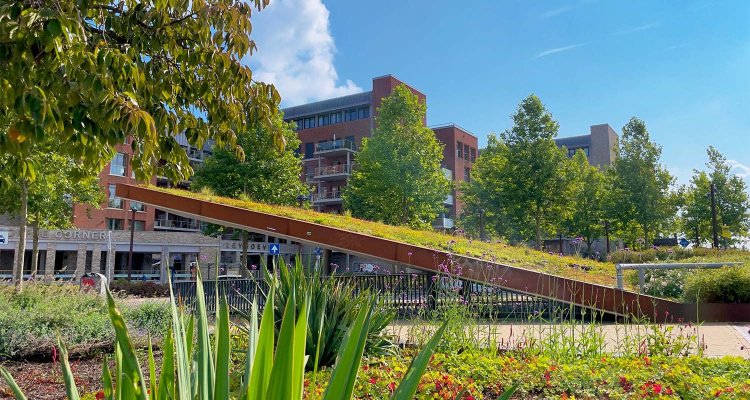
Project
Towards a Green and healthy Living environment (GLOW)
GLOW (“Towards a Green and healthy Living environment: an Opportunity for health and Well-being”) , aims to gain more insight into how the design of the physical living environment as a whole influences our health. We focus on the interactions between design, behaviour and the topics of exercise-friendly environment, green space and food environment. As an end point, we focus on a healthy weight.
Background
More than half of the Dutch population is struggling with overweight, and this problem is expected to only grow in the coming years. The current lifestyle interventions are inadequate to address this growing issue. It is known that the physical environment can influence our behaviour, but which interventions in that environment are most effective in promoting healthy behaviour remains largely unknown, both nationally and internationally.
Objective and research questions
Available knowledge about health promotion through the physical environment is often focused on individual topics, and long-term monitoring and evaluations of living environment interventions are still rare. As a result, it is difficult to put together an evidence-based package of impactful (environmental) measures to promote health.
Motivation
GLOW's ambition in 2026 is to gain more insight into how the design of the physical living environment as a whole influences our health, with a focus on the interactions between design, behaviour and the topics of exercise-friendly environment, green space and food environment. As an end point, we focus on a healthy weight. In order to make optimal use of the possibilities of the physical environment to promote behavioural change and health, more knowledge is needed about effective interventions in the living environment, how to combine data in the evaluation of effectiveness and important determinants of behavioural choices in different contexts and groups.
Plan of approach
Throughout the project, stakeholders (citizens, policy makers, practitioners) will be actively involved in project choices, modelling and evaluation of results (in living labs). Based on knowledge from literature, a system dynamic (SD) model is developed, in which the paths and interrelationships between design, behavior and the chosen topics are described. In addition, an agent-based model (ABM) is being developed with which the effects of changes in the environment can be visualized and to which 'live' data of people's behavior can be added. This data is collected in 2-3 living labs, in which promising interventions for physical activity, green space and food environment are implemented, monitored and evaluated. Next, a synthesis will be carried out of the lessons learned from literature, modeling and living labs.